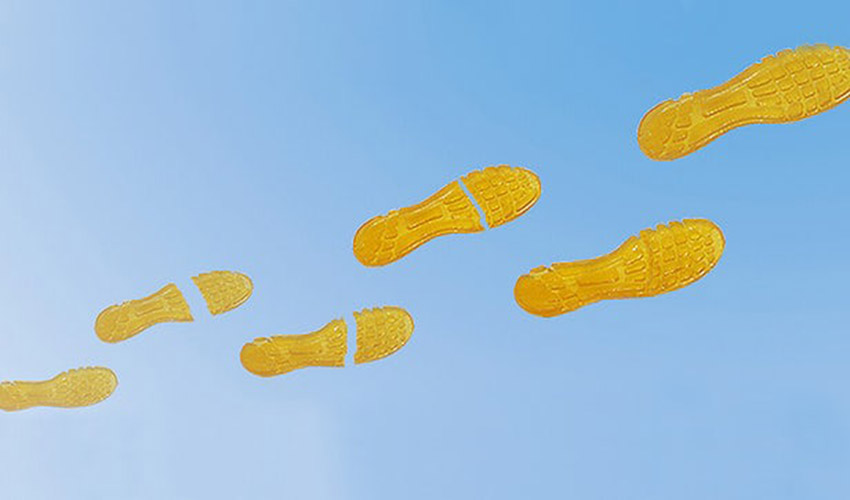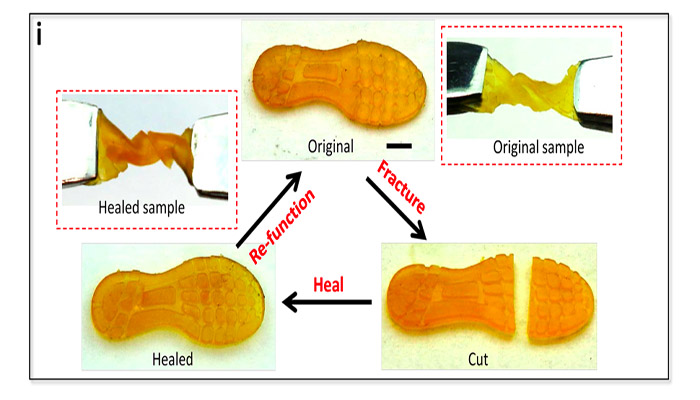Broken shoe? This new 3D printing material repairs itself

Researchers at the University of Southern California, Viterbi School of Engineering, have developed a 3D printing material that repairs itself on its own after being fractured or punctured. These materials could be game-changing for many industries such as the shoe, tires, soft robotics and even electronics industry. In fact, the researchers aim to decrease manufacturing time whilst increasing product durability and longevity.
Trade-off between printing time and self-healing behaviour
The material is manufactured using a 3D printing method that uses photopolymerisation. In other words, it uses light to solidify a liquid resin into a desired object. Furthermore, in order to get the printed objects to self-repair, the research team had to find an optimum mix. The optimum mix was achieved by adding an oxidiser to the equation. Indeed, the oxidiser changes the behaviour of the materials; they become part of the group called disulphides.
We covered earlier that a new 3D printing technique that solidifies objects with rays of light coming from the University of California, Berkeley. This method is similar to that.

Paper: “Additive manufacturing of self-healing elastomers”, Asia Materials
Qiming Wang, assistant professor at the University of Southern California explains, “When we gradually increase the oxidant, the self-healing behaviour becomes stronger, but the photopolymerisation behaviour becomes weaker. There is competition between these two behaviours. Eventually we found the ratio that can enable both high self-healing and relatively rapid photopolymerisation”.
Successful method
The team tested their method by printing a wide range of objects. Including a shoe pad, a soft robot, a multiphase composite and an electronic sensor. Later, they cut all these objects in half. After about 2 hours at 60° C (140° F) most of the objects had healed themselves completely. For example an object that took 20 minutes to print repaired itself within that time scale. Additionally, once repaired the pieces did not lose their strength or function.

Paper: “Additive manufacturing of self-healing elastomers”, Asia Materials
“We actually show that under different temperatures – from 40°C to 60°C – the material can heal to almost 100 per cent,” said structural engineering student Kunhao Yu, who was first-author of the study and is studying structural engineering. “By changing the temperature, we can manipulate the healing speed. Even under room temperature the material can still self-heal.”
The team is now working towards developing different self-healable materials along varying degrees of stiffness. It should include the current soft rubber but also rigid-hard plastics. As a result, harder materials could be very useful for vehicle parts, composite materials and body armours for example.
Find out more about their research HERE.
What do you think of this new material? Let us know in a comment below or on our Facebook and Twitter page! Don’t forget to sign up for our free weekly Newsletter, with all the latest news in 3D printing delivered straight to your inbox!






